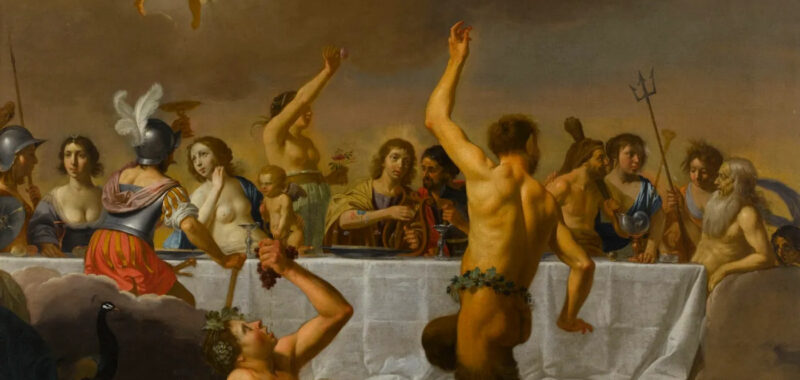Last Friday, the Paris Olympics Opening Ceremony featured a performance by drag artists gathered around a long table. Immediately, conservative Christian politicians and Catholic leadership expressed disgust and condemnation at what they believed was a recreation of Leonardo da Vinci’s “The Last Supper” (1495–98). The Vatican’s representative for the Olympics, Bishop Emmanuel Gobilliard, said the performance deeply hurt him, while Donald Trump called it a “disgrace” and Elon Musk denounced it as “extremely disrespectful.”
Opening Ceremony Director Thomas Jolly was quick to correct conservative critics of the performance, clarifying that it was inspired by Greek mythology, with many pointing to Dutch artist Jan Harmensz van Bijlert’s 1630 painting “The Feast of the Gods.” However, Paris 2024 spokesperson Anne Descamps apologized, along with the International Olympic Committee.
The intense pushback and flurry of apologies make two things apparent: the lack of understanding of Christianity’s art historical roots in paganism, and how the conservative backlash had nothing to do with art history.
Critics who incorrectly claim that the drag performers were imitating “The Last Supper” are reinforcing Christian hegemony, or the supremacy of Christianity as a framework of social, political, and spiritual life. The fact that they immediately identified the performance, featuring a semi-nude blue Bacchus, the Roman god of wine and merriment, as their religion’s most famous feast speaks to their own limited understanding of art history. Christian art is, in fact, deeply rooted in pagan iconography.


Early Christian artists often drew inspiration from depictions of Jupiter, informed by earlier depictions of his Greek counterpart Zeus, when visualizing their God and his son Jesus. These same early Christian artists borrowed naturalist pagan symbols, such as fish, doves, olive branches, and lambs, that have now become central to Christianity. Last Friday’s ceremony did not “co-opt” anything Christian because none of it belonged to Christianity in the first place.
The performance was actually an authentic representation of the history of Greece and its brainchild, the Olympic Games themselves. Bacchus — the counterpart to the Greek Dionysus — is traditionally depicted as androgynous, part of his role as a god of transformation. Ancient Bacchanalia, feasts devoted to Bacchus, may have included queer celebrations, and modern bacchanalia — reflective of the rising popularity of devotion to ancient Greek and other pre-Christian deities — often feature Pride components.
This is what Paris’s opening ceremonies depict: a Bacchanalia reinforcing the divinity of LGBTQ+ people who are increasingly returning to pagan devotions when they are cast out of or leave churches that abuse and persecute them, such as the Catholic Church that funded hundreds of Last Supper paintings. Many drag performers are Christian, and to argue that they have no place recreating iconographic art is to deny their own religious histories. As pastor and drag queen Marge Erin Johnson said in an Instagram post responding to critics of the Olympics ceremony, “Drag is a sacred art. It is a spiritual experience to transform yourself through the art of drag.”

Even if last Friday’s performance were a reference to Leonardo’s “The Last Supper,” it would still be true to the Catholic Church’s art history. The concept of depicting Jesus and his apostles as queer is not new. Some depictions of the Last Supper, arguably Leonardo’s, depict a femme Jesus and his homoerotic relationship with John the Apostle. In 1998, Swedish photographer Elisabeth Ohlson Wallin staged images of Jesus wearing heels and surrounded by disciples in drag in her 1998 series Ecce Homo. Artist Barry Brandon’s “First Queer Supper” reimagines the scene with gender-expansive apostles. Drag artists have also performed as Jesus through their art, including Yvie Oddly, Cybil War, and Landon Cider, and artist Petty Indecencies has created glittery portraits of Jesus in drag from Messiah paintings found at thrift stores.
The backlash against the Olympic opening ceremony was never about art history or “The Last Supper.” It was about wielding religion once again to condemn LGBTQ+ people, censor their art, and get queer performers off the stage. But as French drag queen Nicky Doll, who performed in the ceremony, succinctly responded, “We ain’t going nowhere.”

